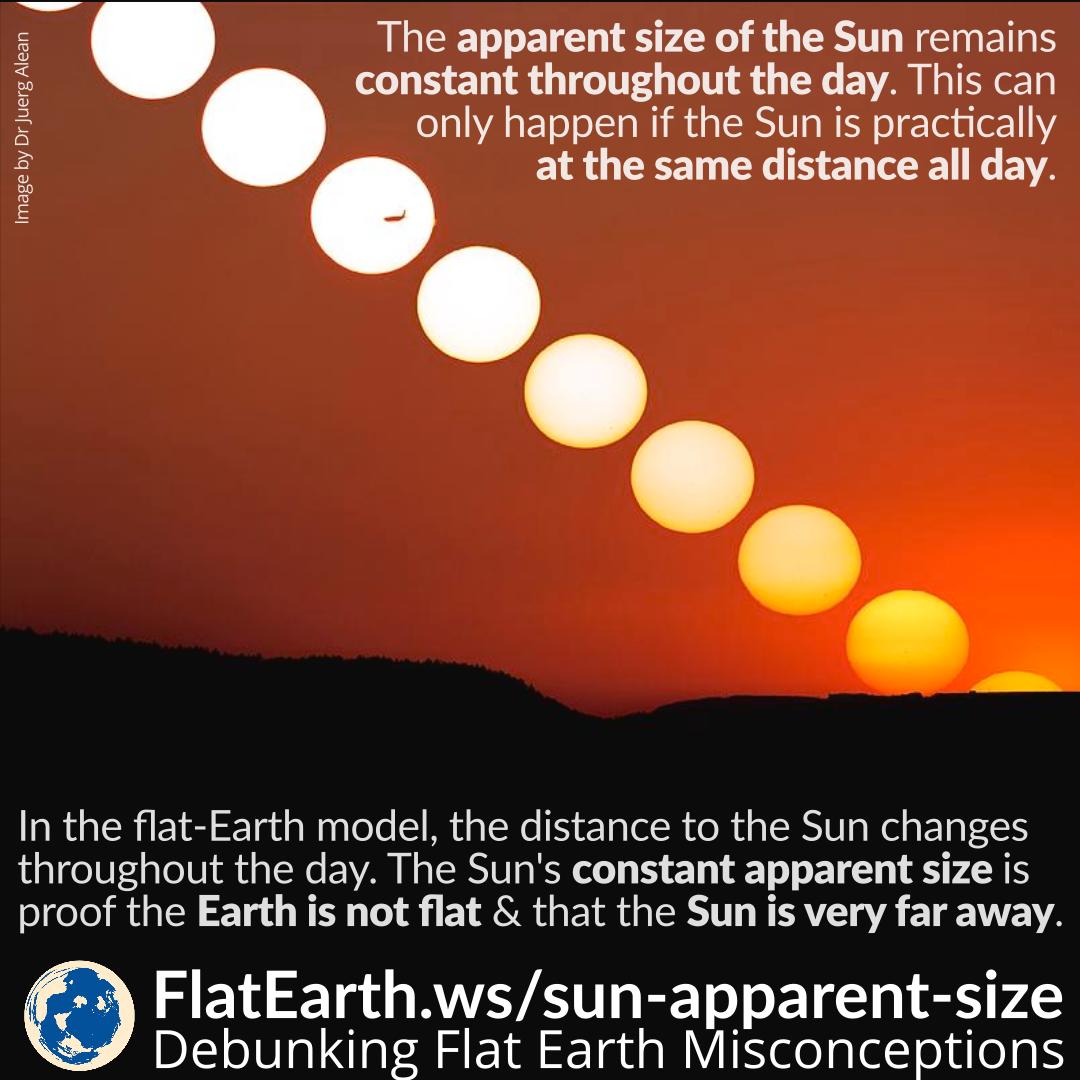The apparent size of the Sun is practically constant throughout the day. This can only happen if the Sun is practically at the same distance all day.
In the flat-Earth model, the Sun is close to the surface at the distance of about 5000 km (3500 miles). The Sun is supposed to be moving in a circle, and it completes the circling motion once in a day. This fact should cause the Sun’s apparent size to change during the day. But it does not happen. The Sun’s constant apparent size is evidence that the flat-Earth model is wrong, and that the Sun is very far away.
The Sun’s apparent size does change, but that happens in a yearly cycle. This happens because of the eccentricity of Earth’s orbit. The Sun appears the smallest on July 3 when it is at the farthest distance to us, and the largest on January 3 when it is the closest. The change is tiny, and hard to notice in casual observation. The Sun’s apparent size varies between 0.524° to 0.5418°.
During a single day, the Sun’s apparent size is practically constant, and thus, the distance to the Sun is also practically constant.
Some flat-Earthers insist that the Sun changes its size during the day. But this happens simply because of their photography skills (or the lack thereof). They didn’t attempt to control the sun glare using a solar filter or exposure settings.
The fact that the apparent size of the Sun remains constant throughout the day is one of the so many observations that invalidates the flat-Earth model.
References
- Earth’s orbit – Wikipedia
- Sun Glare Makes The Sun Appear Larger – FlatEarth.ws


